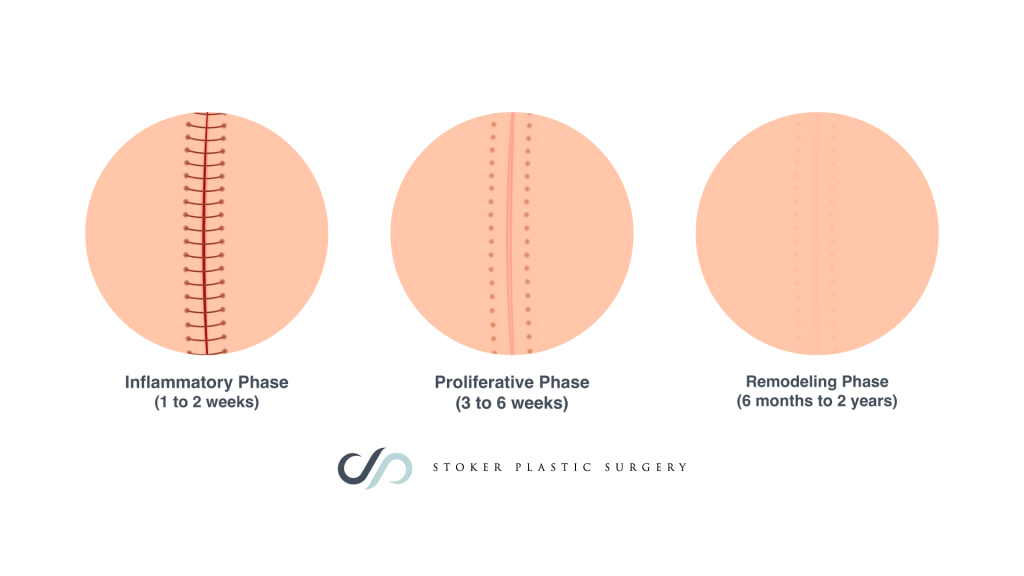“Are people going to notice my scars?” That’s one of the first questions nearly all women and men considering facelift surgery ask during their consultations. Concerns about visible scars after a facelift are understandable, but fortunately also overstated. A skilled, board-certified plastic surgeon minimizes the scars’ visibility by meticulously placing incisions within the natural creases around the ears and hidden in the hairline.
When I perform my Traceless Facelift, deep plane facelift, or mini facelift, I use the same care to ensure inconspicuous healing and scars that are not only hidden but also fade over time.
Traceless Facelift vs Deep Plane Facelift Scars
The incision locations used for the Traceless Facelift and deep plane facelift are placed where the resulting scars are virtually imperceptible. In both techniques, the incisions originate in the hairline by the temples and extend down around the ears, creating access to the deeper layer of tissues that I reposition and tighten to restore a youthful, natural-looking appearance.
Facelift Incisions (Hidden Scars) Before and After Photos
How Scars Fade: A Week-by-Week Timeline
The healing process and the time it takes for facelift scars to fade can vary from person to person, depending on factors such as age, skin type, and overall health. This timeline addresses what you can expect to see as the incisions heal. This is different than the recovery timeline, which you can learn more about in this previous blog post.
Generally, facelift scars will go through several stages of healing:

Inflammatory Phase (1 to 2 weeks)
The body’s natural initial reaction to an incision is the constriction of blood vessels that stop bleeding (vasoconstriction). That occurs during the first day or two after surgery. During the ensuing 1 to 2 weeks, you can expect the incision sites to appear red and slightly swollen as the healing process kicks into gear. Even though infections following facelift surgery are very rare, it’s essential to follow our incision care instructions to keep the wound clean during this phase. Using a topical petroleum jelly or silicone gel during this time also promotes healing.
Proliferative Phase (3 to 6 weeks)
Even after you’re physically recovered from facelift surgery, the skin continues to heal as the body produces new collagen and a scar begins to develop. Minimizing the appearance of the scar begins during the procedure when a skilled facelift surgeon ensures there is little to no tension on the skin closure. You’ll see scars become flatter, softer, and less pink during this time.
Remodeling Phase (6 months to 2 years)
Scar tissue can form over several months to a couple of years. During this phase, the new tissue gradually becomes stronger and more flexible. Collagen production continues to build the skin’s elasticity, and the scar continues to fade and flatten. You may even have a hard time detecting the scar when looking closely.
How to Minimize a Facelift Scar
Even though I take care to conceal incisions in natural creases and within the hairline, you can minimize the appearance of the scar by following a few tips.
Because the face is exposed more than other areas of the body, limiting sun exposure is the best way to minimize scarring. The sun’s UV rays can cause scars to darken and can also delay healing. Steps you should take whenever going outside include:
- Wearing a wide-brimmed hat and sunglasses
- Applying a broad-spectrum sunscreen with an SPF of at least 30, even on cloudy days
- Limiting your time outdoors during peak sunlight hours
- Being cautious near reflective surfaces, such as water and sand
Other lifestyle choices that help fade scars include not smoking, staying hydrated, and following a healthy diet. If you have any concerns about your scars, we encourage you to contact your surgeon to get more information.
Let’s Talk
Facelift surgery is the gold standard for reversing signs of aging and looking as youthful as you feel. I customize facelift techniques based on your skin’s condition and the goals you describe during the consultation. You can request a consultation to meet with me personally by using the online form or by calling our office at (310) 300-1779.








Leave a Reply